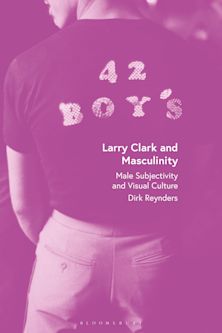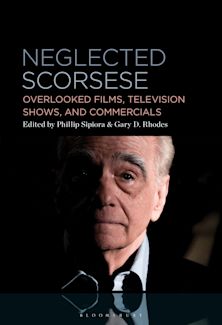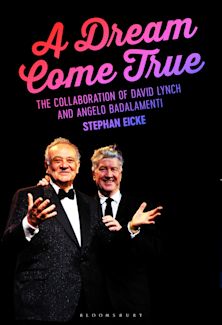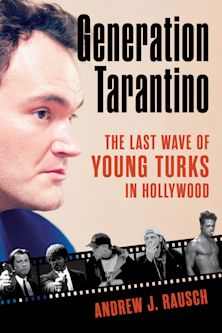- Home
- ACADEMIC
- Film & Media
- Film Directors
- Artists’ Moving Image
You must sign in to add this item to your wishlist. Please sign in or create an account
Description
This book analyses art which directly engages with mainstream cinema.
Artists have long been fascinated by film, but recent decades have seen an explosion in direct artistic engagements with mainstream cinema. Ranging from sampling to imitation, these engagements often also bring conventions of cinematic display into the gallery space. This book presents a diverse and wide-ranging body of works from established artists such as Steve McQueen's Deadpan and Douglas Gordon's 24-Hour Psycho, to works by emerging artists like Jesse Jones' Zarathustra, Shezad Dawood's Feature and Rachel MacLean's Over the Rainbow, reinvigorating the existing 'canon' of cinematic artists' films.
Beyond an interest in individual pieces, Sarah Smith categorises and analyses the trends in this expanding area of art practice, arguing that the point of interest is not cinema (and its history) per se, but what its evocation as cultural archive can illuminate about the legacies of the past in the present . Examining subjects such as found footage and feminist poetics, the documentary turn in contemporary art and the unfinished film, she shows how artists' films interrogate dominant cinematic forms and their cultural meanings. For anyone interested in contemporary art, film studies or exhibition practice, this book is a much needed and defining exploration of cinema as archive in artists' moving image.
Table of Contents
Section 1: Sampling
Chapter 1: Slurs, Stutters and Screams: Articulations of Hollywood's Unconscious in Artists' Moving Image
· 24 Hour Psycho (Douglas Gordon, 1993)
· Alone. Life Wastes Andy Hardy (Martin Arnold, 1998)
· Him + Her (Candice Breitz, 1968-2008)
Chapter 2: Found Footage Film as Feminist Poetics
· Bullets for Breakfast (Holly Fisher, 1992)
· Psi Girls (Susan Hiller, 1999)
· Mirror World (Abigail Child, 2006)
Chapter 3: The Documentary Turn in Contemporary Art
· B/Side (Abigail Child, 1996)
· Dial H-I-S-T-O-R-Y (Johan Grimonprez, 1997)
· Bernadette (Duncan Campbell, 2008)
Section 2: Imitation
Chapter 4: Maximal Intertextuality
· Cremaster Cycle (Matthew Barney, 1994-2002)
· Feature (Shezad Dawood, 2008)
· Over the Rainbow (Rachel Maclean, 2013)
Chapter 5: Aesthetic Dissonance and the Hollywood Fragment as Audiovisual Metonym
· Deadpan (Steve McQueen, 1997)
· Zoo (Salla Tykkä, 2006)
· Zarathustra (Jesse Jones, 2008)
Chapter 6: The Unfinished Film and Archival Partiality
· Two Impossible Films (Mark Lewis, 1995)
· Unfolding the Aryan Papers (Jane and Louise Wilson, 2009)
· End Credits (Steve McQueen, 2012-2022)
Conclusion: New Directions for Critical Engagements with Cinema in Artists' Moving Image
Bibliography
Index
Product details

| Published | 19 Mar 2026 |
|---|---|
| Format | Ebook (PDF) |
| Edition | 1st |
| Extent | 200 |
| ISBN | 9781350160330 |
| Imprint | Bloomsbury Academic |
| Illustrations | 19 colour illus |
| Publisher | Bloomsbury Publishing |
About the contributors
Reviews
-
This brilliant book discusses some of the most important installation video and film art pieces and their intersections with contemporary cinema, as well as discussing numerous other ambitious and influential installation art works that may not be as well known. It explores these projects in rich detail, offering many surprising and illuminating insights. It's a remarkable and deeply researched book – essential reading for film and video historians – examining some of the key works of 20th and 21st century film and video art.
Wheeler Winston Dixon, Professor Emeritus of Film Studies, University of Nebraska-Lincoln, USA


































